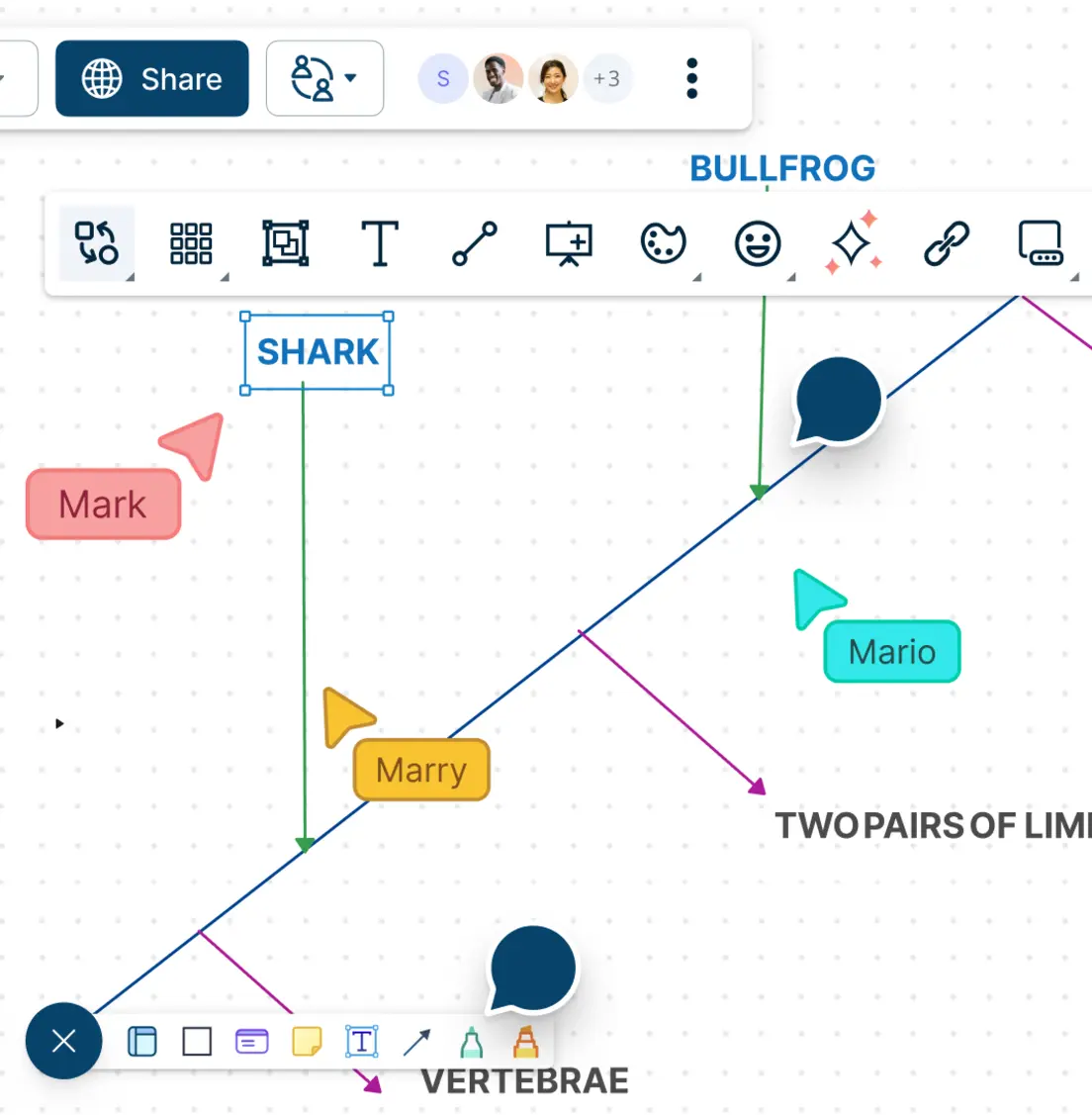Free Cladogram Maker
Visualize Relationships Between Species
Effectively visualize and identify the phylogenetic relationships among various biological species with cladograms.
- Easy-to-use visual canvas to visualize relationships
- Multiple cladogram & phylogenetic tree templates to start quickly
- PNG, SVG, and PDF image export for sharing and printing

 Diagramming
Diagramming Visual Collaboration
Visual Collaboration Org Chart
Org Chart


Simplify Cladistic Analysis

Draw over 50 types of diagrams with the extensive shape libraries.
Visualize phylogenetic relationships effortlessly with simple to use drag and drop tools.
Customize cladograms easily with color themes and advanced text formatting.
Import or drag and drop animal images or use the built-in Google-image search.


Centralize Your Research Data

Organize selected organisms using the table function with advanced customizability.
Quickly group organisms based on shared characteristics with pre-designed templates.
Create interactive presentations and reports with easy-to-use built-in tools.
Gather research data around species and arrange them in the infinite canvas.
Collaborate with Peers Anywhere, Anytime

Work with students, teachers, or fellow researchers on a shared canvas.
Real-time cursors for any number of participants.
Comment with context to have discussions and follow-ups on the same canvas. Async!

What Is a Cladogram Maker?

How to Create a Cladogram in Your Classroom?
- Open and share the Creately workspace
Log in to Creately and create a new workspace for your class. Assign each group their own folder or workspace and share access via email or link.
- Collect and organize data in Creately
Ask each group to gather data on organisms (morphological features, DNA sequences, etc.). Use Creately’s tables or sticky notes to list ancestral and derived characteristics.
- Identify characters and states collaboratively
Guide groups to mark out ancestral traits for the outgroup and derived traits for the ingroup. They can format the data directly in the workspace using text boxes, tables, or color coding.
- Create the cladogram
Students can pick a cladogram template from Creately’s library or start with a blank canvas. They can drag and drop shapes, draw connections, add images, and customize the diagram to show evolutionary relationships.
- Collaborate, present, and revise
Each group adds notes or sticky annotations to explain their reasoning. They can present cladograms directly in Creately using frames and color themes. Encourage feedback through comments, then update and refine the diagrams together.
Create Your Cladogram with Free Editable Templates
FAQs About Creately’s Cladogram Maker
Can I add notes or references to specific branches or species?
Can I access my cladograms from anywhere?
Can I export the cladograms I create into other documents?
Can I add images into my cladograms?
What is the best tool for creating a cladogram?


























